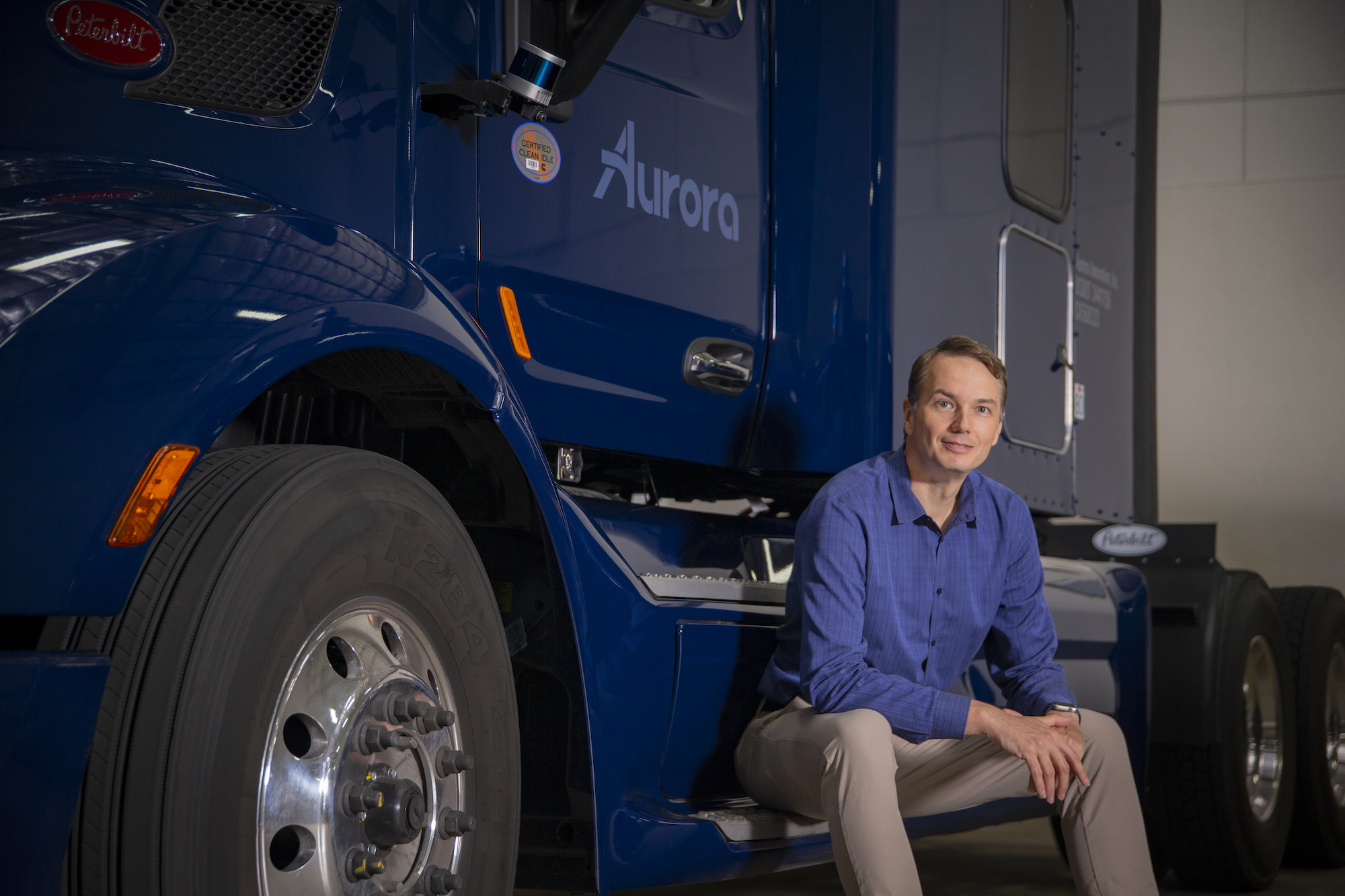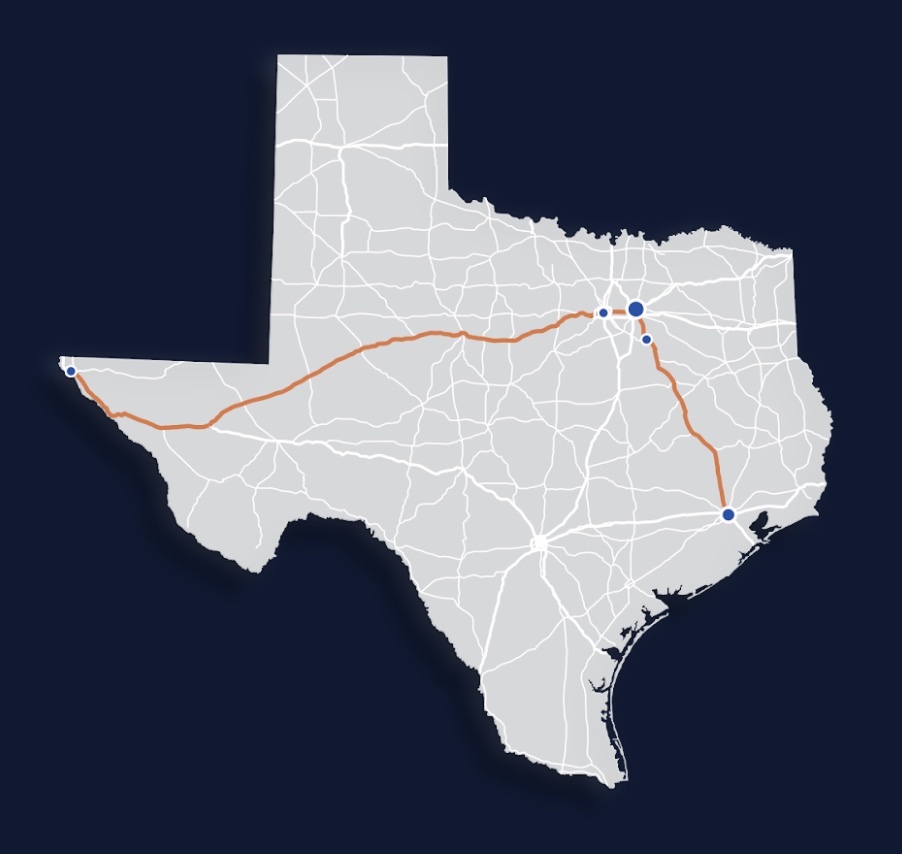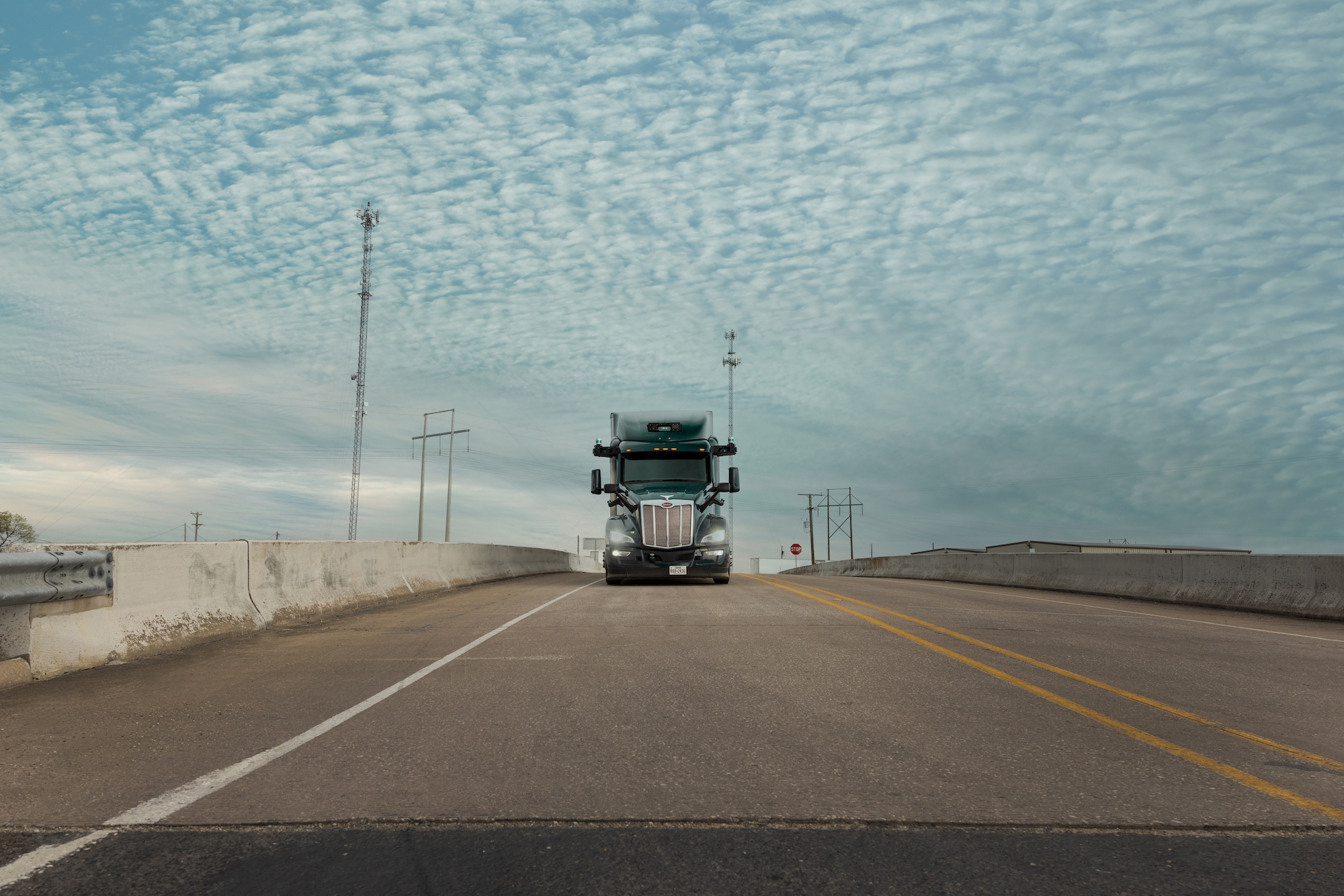
amidst economic uncertaintyTight capital markets, wary investors, and integration into the nascent autonomous vehicle industry, Aurora Innovation is still on track toward its goal of commercializing self-driving trucks by 2024, identifying waypoints and milestones along the way.
It even managed to rack up some wins in the past year, including launching or expanding pilot programs with FedEx, Ryder and Schneider, and Uber Freight. Recently, Aurora announced that its self-driving system is “complete” — an industry term that means the technology has all the capabilities needed to move cargo autonomously on public roads. It deployed the first “commercial off-the-shelf” independent freight stations in Palmer, Texas, the infrastructure needed if the company’s trucks were to be on the road 24 hours, every day of the year.
Three years ago, it wasn’t clear if Aurora would survive his ambitious and risky move.
In late 2020, Uber sold its self-driving unit Uber ATG to Aurora in a complex deal that along with autonomy efforts would boost the startup’s valuation to $10 billion. With Uber being awarded a 26% stake in the company.
The deal freed Uber from a troubling path of development, including a 2017 lawsuit by Waymo for trade secret theft and patent infringement (which Uber settled in 2018), as well as a fatal 2018 accident involving an Uber ATG self-driving test vehicle. But while Aurora acquired talented engineers, it also faced the difficult process of integrating some 1,200 former Uber ATG employees into its operations.
Six months later, Aurora will make another leap: this time into the public markets by merging with a special purpose acquisition company, an increasingly risky path that has stymied many other auto startups. The Aurora Stock struggled along with other SPACs for mobility; Its share price debuted on November 4, 2021, at $11.25 a share. Aurora stock is down 85% since then and was trading Monday at $1.46 a share.
“I think there’s a better house in a bad neighborhood kind of vibe. That there’s a lot of things that probably don’t go well with this space, right? But, co-founder and CEO Chris Urmson said in a recent interview. You know, I think this is short term. Short-term issue because we continue to show progress and execution and the fact that we’ve been making strategic bets for years is paying off, right? To expect that to be acknowledged and, you know, things will move forward.”
New challenges

Co-founder and CEO of Aurora Chris Urmson Image credit: Aurora
Now Aurora faces another set of challenges as it goes commercial, from placating shareholders and its growing list of partners to navigating regulatory hurdles in California and raising more money.
Despite this “full feature” achievement, Aurora still has a lot of testing to do, including ramping up to 100 payloads per week between Dallas and Houston by the end of this year.
The company has more than 30 trucks are on the road in Texas today, hauling goods with more than 50 trips a week. To date, the company’s trucks have traveled more than 400,000 miles and been towed 20 million pounds of freight for FedEx, Uber Freight, Werner and Schneider.

Screenshot of Aurora’s trucking route as of April 2023
If all goes according to plan, Aurora will commercially deploy its self-driving system called Driver in Texas, without human supervision on board, by the end of 2024.
According to Urmson, his company’s autonomy technology will fix what he calls a “systemic problem” in the US supply chain: “There aren’t enough people willing to drive trucks. We’re short about 80,000. We expect there will be a shortfall of about 150,000 by the end of the decade.”
The trucking industry also suffers from a whopping 90% turnover rate, and its workers must adhere to a limit of 11 hours per day behind the wheel.
Urmson says an Aurora driver should be able to keep the truck moving for 20 hours on an average day, and that, combined with the associated fuel savings and lower insurance costs due to safe driving, theoretically means double the revenue per truck for a fleet operator.
“Getting from Houston to Los Angeles, for example, takes about three days by truck today, because of 11 hours of service restrictions. An Aurora driver should be able to make that trip in 24 hours,” Urmson said.
Regulatory speed bumps

An Aurora Innovation truck drives over a bridge in Texas. Image credit: Aurora
These increased efficiencies and subsequent lower costs are critical to the appeal of Aurora technology in the trucking industry. But, there is one ugly fly that is menacing around soup: AB-316 in California. If passed, this law would require human operators to be in trucks within the state of California, and could trigger similar legislation elsewhere.
While Urmson hopes California will “see the economic and safety benefits” of autonomous trucks and allow driverless operation, Aurora is prepared for a possibility in which it becomes law: “It will mean helping our customers move freight between Arizona and the East Coast,” Urmson said.
In other words: no work in California. If policies like these gain traction, this trend could pose a threat to Aurora’s business plan.
“It certainly would be if we ended up with some kind of chessboard across the United States,” Urmson said. “But, in practice, I think this is unlikely.”
Uber ATG promotion
Right now, Aurora’s primary goals are to validate driver jobs within the state of Texas and do everything it can to keep costs down. Urmson told TechCrunch that the ATG acquisition helped on both fronts.
With ATG, Aurora went from 600 to 1,800 employees “overnight,” and Urmson says they’re still in business with about 1,700 employees. While some Uber ATG employees chose to leave after the deal was done, Urmson said none were laid off: “Those who want to be here are there, and that’s really all we can hope for, isn’t it?”
At this point, the teams were well integrated, according to Urmson, but it was a painful process.
“We were respectful of the culture on both sides. And I think that only led to confusion,” Urmson said, with a conflicting sequence of reports and redundant efforts. “Like any organization, there are pockets of challenges, but I think, again, these people who have united in the mission of let’s go get vehicles on the road, let’s do something that’s going to change the world, they’re a really good fit.”
The Uber ATG deal also helped Aurora become more efficient and reduce costs with the goal of expanding the company’s runway in the run-up to commercialization. For example, Urmson said that ATG’s cloud computing batch processing was much more efficient than the way Aurora had previously handled distributed tasks. “As you can imagine, for all of our machine learning (ML) stuff, and all of our testing and simulations, there’s an enormous amount of cloud orchestration that’s going on,” Urmson said.
Using ATG’s bundling process, Aurora’s distributed systems team has been able to take disparate cloud requests and bundle them together into fewer and larger requests, saving time and reducing costs. “That was a really powerful thing and it’s the core of what we use today,” Urmson said, estimating that the cost savings there alone are in the “tens of millions of dollars.”
On the functional side, the simultaneous localization and mapping (SLAM) procedure of ATG has the potential to generate high-resolution maps more efficiently. ATG sampling-based motion planning is integrated to assist the Aurora driver in emergencies and near-collision situations. The behavior of the Aurora Driver in building areas is also derived from the ATG algorithms.
All of this will be included in Aurora Driver Beta 6.0, which “delivered the ultimate driving capabilities needed to move goods commercially without vehicle operators,” according to Aurora. That commercial launch remains targeted for next year, Urmson says, and those cost-cutting measures have ensured that Aurora has enough cash to get the company through mid-2024.
More money, more runway
Aurora is now focused on turning all of that pilot software into long-term customers. The company will host its first customer summit at the end of April in Dallas — an event that will bring together its pilot customers and partners to discuss the next steps toward a commercial launch, according to the company.
However, another increase is still in the plans. On April 6, Aurora submitted a bid to view the proposed hybrid rack to raise $350 million.
“We didn’t shy away from the fact that we would need to raise additional capital in the future,” an Aurora spokesperson told TechCrunch when asked about the filing. “This is a standard filing that provides Aurora flexibility to raise money at a future date, but it is not an indication that we intend to fundraise immediately.”
Meanwhile, Urmson said he’s focused on de-risking the business.
“We’re going to wait for the right time and the right partners. What we see, as a company, is we look at these milestones, our execution against them, and we view them as key moments to de-risk our business,” Urmson said.
Reducing risk and inspiring confidence is key now, especially in the wake of large-scale mergers across the industry that have left some investors wary.
Argo AI’s abrupt termination last year left many wondering about the future of independence as a company. Meanwhile, Alphabet’s self-driving unit Waymo reportedly ended its own trucking effort, Waymo Via, in January. (Urmson previously led Google’s previous self-driving project.)
“I think one of the really important early decisions we made as a company was to be independent,” Urmson said, referring to Argo AI being funded by Ford and Volkswagen. “As a company, we have a mission to deliver the benefits of self-driving technology safely, quickly, and at scale,” he said. “We work with great partners, but none of them have this mission.”
For Urmson, it was this imbalance between Argo’s quest for independence and its parent companies’ need for profitability that ultimately sealed Argo’s fate during tough economic times.
Until things get better, Urmson continues to stress the importance of economics on his team: “We have a section we call ‘Every Little Bit Matters’ on each of our teams and highlight where teams across the company have saved thousands to millions of dollars either by doing nothing What or finding a less expensive way to do it. I think that’s a muscle that will serve us well, even when economic times get better.”
